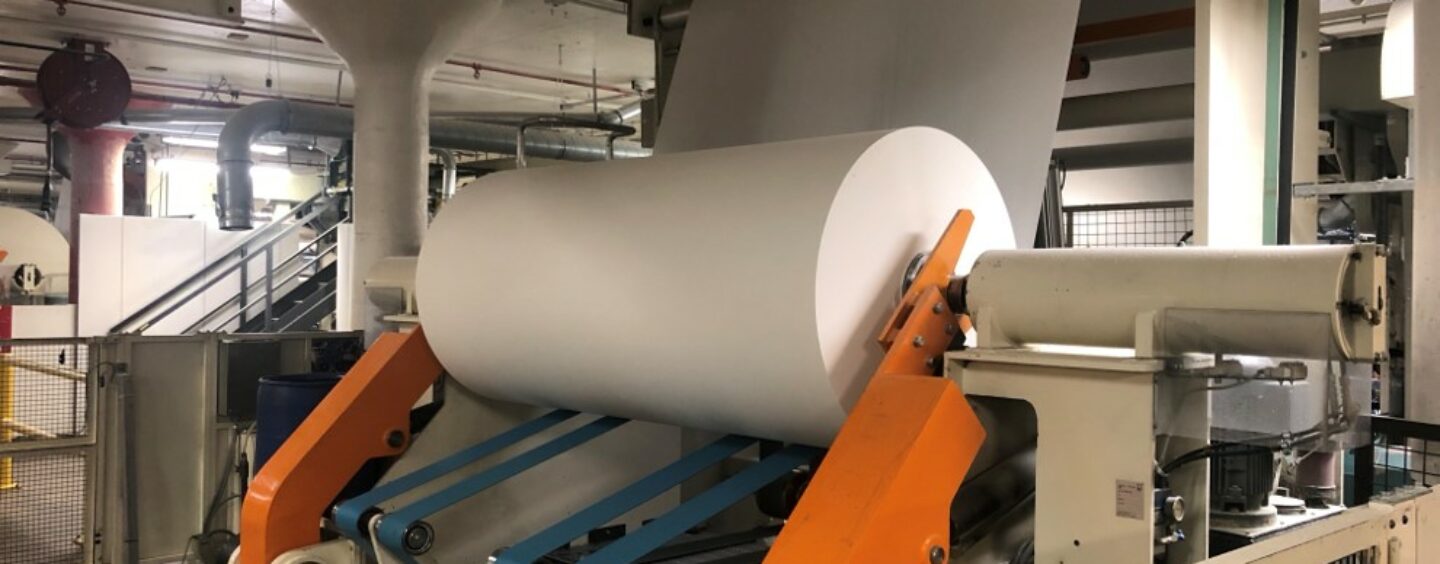
Fast power measurement proves effectiveness of motor drive software
by Yokogawa Test&Measurement Editorial Team May 9, 2022Here at Yokogawa we’re pleased to reveal how our high-speed power measurement capabilities recently helped AC Kinetics to prove the effectiveness of their proprietary motor drive software. The software is designed to increase both the energy efficiency and performance of induction motors, but proving these capabilities to a prospective customer required the use of a Yokogawa portable data acquisition recorder.
In 2019, AC Kinetics developed a new algorithm for Georgia-Pacific, a large US-based paper products manufacturer. The goal of this algorithm was to produce average power consumption savings of at least 10% in the large AC induction motors which drive the company’s paper winding machines.
Of course, saying it’s possible to generate savings of 10% and proving it are entirely different matters. So, how could AC Kinetics demonstrate the effectiveness of their algorithm to Georgia-Pacific? Well, in short, they needed a way to precisely and accurately measure the power consumption of both the existing motor drive, and an equivalent motor drive running AC Kinetics’ optimization algorithm.
The company therefore turned to the expertise of Yokogawa field applications engineers. They wanted us to facilitate accurate, repeatable measurements of multiple power parameters using independently verifiable equipment, as only this would bring credibility to the results.
Georgia-Pacific’s rewinding machine at its Green Bay, Wisconsin factory produces jumbo-sized hand tissue for public restrooms. The machine unrolls huge, 6 ft (1.83 m) diameter cylinders of sheet paper before rewinding them around core board to make hundreds of smaller rolls. Each rewinding operation requires a 75 hp (56 kW) motor to accelerate from a stationary position up to a speed of almost 2,000 ft/s (610 m/s), before decelerating and coming to a stop. The machine performs these sub-60-second cycles 24 hours a day, seven days a week.
Safe pair of hands
Factories are challenging environments for test engineers; not only is safety of paramount importance, but large motors and high-voltage power cables generate large amounts of electromagnetic interference (EMI). However, despite these complexities, we knew we could help.
In the first instance, it was necessary to mount the test equipment securely in an isolation box, and operate it remotely using a cellular network modem and our XWirepuller app. Testing could then begin.
So what needed measuring? Well, AC Kinetics first had to measure the voltage and current on two of the three phases of Georgia-Pacific’s existing motor drive – a Rockwell product – to acquire a baseline figure for the AC induction motor’s power consumption. They then had to take the same measurements on the replacement motor drive, a custom Oztek model running the algorithm. Tests were also required to measure the voltage and current on the machine’s DC bus.
In addition, to verify that running the algorithm did not impair motor performance, AC Kinetics had to measure the rotational speed of the motor during each cycle.
After our assessment of the application, there was a clear requirement for a modular instrument which could handle multiple voltage and current inputs simultaneously, produce calculated power waveforms, and support the logging of measurement results.
Instrument of choice
The clear recommendation was our modular Yokogawa DL850E ScopeCorder, a portable data acquisition recorder that can capture and analyze both transient events and trends in electrical signals, sensor inputs, and serial data streams. Importantly, the data files of our DL850E are proprietary, traceable, and impossible to fake, yet test engineers can read and plot the files using standard software tools.
In the Georgia-Pacific test set-up, AC Kinetics used five high-voltage power modules to measure the current and voltage at the motor drive and on the DC bus, as well as a frequency measurement module to convert an encoder output from the motor drive to a speed measurement in rpm. They also took advantage of a 16-bit analog module to track speed commands from the rewinding machine’s PLC.
Impressive results
The measurements captured by our DL850E showed without any doubt that that motor drive algorithm improved the efficiency of Georgia-Pacific’s rewinding machine, while maintaining or even enhancing performance.
Over the course of the tests, AC Kinetics were able to monitor and refine the operation of their algorithm based on real-time speed, power, and temperature readings produced by the Yokogawa DL850E. Our ScopeCorder was then used to acquire average power measurements over multiple production cycles.
Average power consumption measured at the rewinding machine demonstrated an energy saving attributable to the AC Kinetics’ motor drive of an impressive 31% compared with the original Rockwell drive, equating to savings of $1,400 per year (from just one machine).
To discover more about our DL850E please click here.
Read the full case study with AC Kinetics.


No Comments so far
Jump into a conversationNo Comments Yet!
You can be the one to start a conversation.